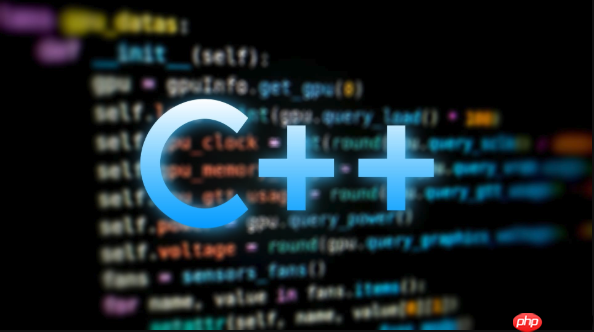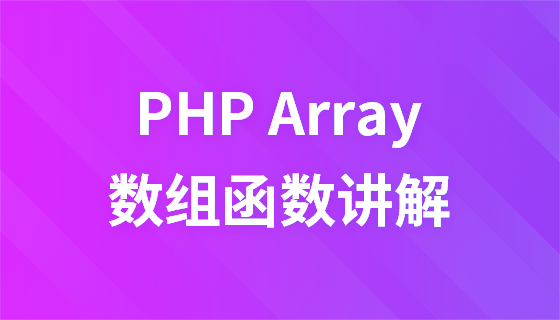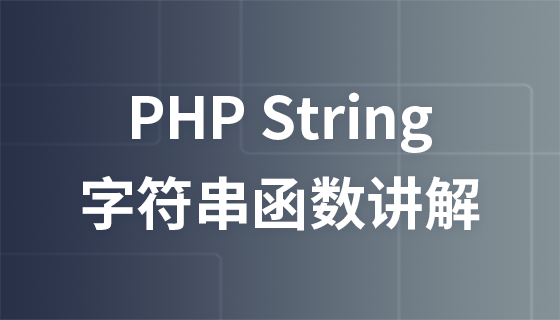std::function 和 std::bind 是 C++ 中用于封装和绑定可调用对象的重要工具,前者统一可调用接口,后者实现参数绑定与顺序调整,二者结合常用于回调机制和成员函数封装,但现代 C++ 更推荐使用 lambda 表达式替代 bind 以提升代码简洁性。

在C++中,std::function 和 std::bind 是两个非常实用的工具,它们定义在 <functional> 头文件中,常用于实现回调机制、延迟调用、函数对象封装等。下面详细介绍它们的用法和结合使用方式。
std::function 是一个类模板,可以封装任何可调用目标——包括普通函数、函数指针、lambda表达式、函数对象(仿函数)、成员函数指针以及通过 std::bind 创建的绑定对象。
基本语法:
std::function<返回类型(参数类型...)> 变量名;
示例:
立即学习“C++免费学习笔记(深入)”;
#include <functional>
#include <iostream>
<p>void hello() {
std::cout << "Hello\n";
}</p><p>int add(int a, int b) {
return a + b;
}</p><p>int main() {
std::function<void()> f1 = hello;
f1(); // 调用 hello</p><pre class="brush:php;toolbar:false;"><pre class="brush:php;toolbar:false;">std::function<int(int, int)> f2 = add;
std::cout << f2(3, 4) << "\n"; // 输出 7
// 绑定 lambda
std::function<int(int)> f3 = [](int x) { return x * x; };
std::cout << f3(5) << "\n"; // 输出 25}
std::function 的优势在于统一接口,便于存储和传递不同类型的可调用对象,特别适合用作函数参数或类成员变量。
std::bind 用于将函数与部分参数绑定,生成一个新的可调用对象。它支持占位符(_1, _2, ...),表示调用时传入的实际参数。
基本语法:
auto bound_func = std::bind(函数, 参数1, 参数2...);
占位符说明:
示例:
立即学习“C++免费学习笔记(深入)”;
#include <functional>
#include <iostream>
using namespace std::placeholders;
<p>int multiply(int a, int b, int c) {
return a <em> b </em> c;
}</p><p>int main() {
// 固定前两个参数,第三个由调用时传入
auto func = std::bind(multiply, 2, 3, _1);
std::cout << func(4) << "\n"; // 相当于 multiply(2, 3, 4) → 24</p><pre class="brush:php;toolbar:false;"><pre class="brush:php;toolbar:false;">// 使用多个占位符并调整顺序
auto func2 = std::bind(multiply, _2, _1, 5);
std::cout << func2(2, 3) << "\n"; // 相当于 multiply(3, 2, 5) → 30}
通常会把 std::bind 的结果赋值给 std::function,以便统一管理或作为回调函数。
示例:绑定成员函数
#include <functional>
#include <iostream>
using namespace std::placeholders;
<p>struct Calculator {
int add(int a, int b) {
return a + b;
}
};</p><p>int main() {
Calculator calc;</p><pre class="brush:php;toolbar:false;"><pre class="brush:php;toolbar:false;">// 绑定成员函数,this 指针作为第一个参数
auto bound_add = std::bind(&Calculator::add, &calc, _1, _2);
// 使用 function 包装
std::function<int(int, int)> func = bound_add;
std::cout << func(10, 20) << "\n"; // 输出 30}
应用场景:
使用 bind 时注意以下几点:
基本上就这些。std::function 提供了灵活的调用接口,std::bind 则实现了参数绑定和调用适配,两者配合能处理复杂的调用场景,但在现代C++中,lambda 表达式往往更推荐使用。
以上就是c++++怎么使用bind和function_bind与function用法详解的详细内容,更多请关注php中文网其它相关文章!

c++怎么学习?c++怎么入门?c++在哪学?c++怎么学才快?不用担心,这里为大家提供了c++速学教程(入门到精通),有需要的小伙伴保存下载就能学习啦!




Copyright 2014-2025 https://www.php.cn/ All Rights Reserved | php.cn | 湘ICP备2023035733号